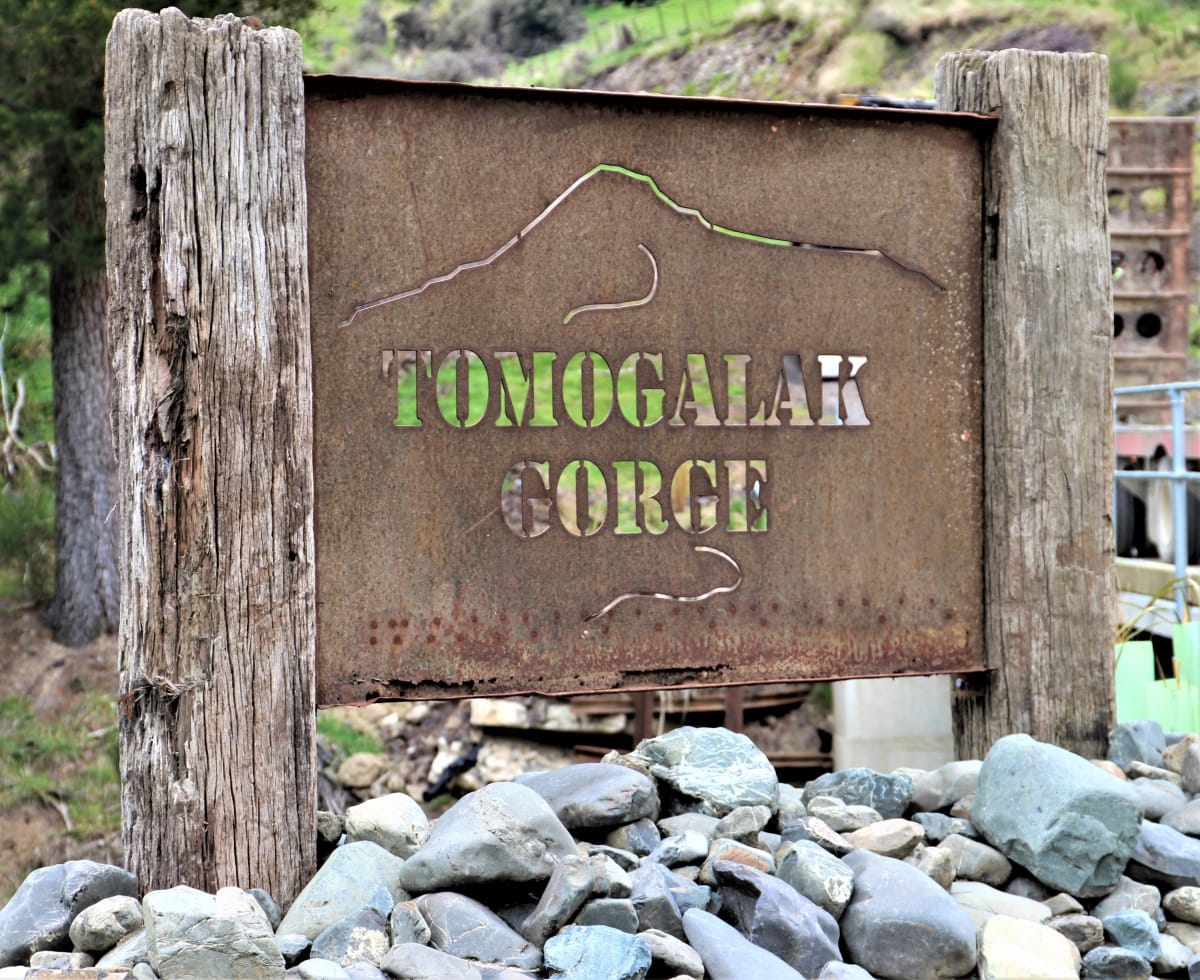
A multi-award-winning Southland couple share their harrowing experience of regenerative land practices as a warning of what can go wrong down on a green farm
Linzi and Jeff Keen were fencing off waterways and planting natives well before it was fashionable.
In what is a fairly traditional farming landscape near Lumsden in Northern Southland, the innovative couple continue to be the greenies of the hood.
Rolling hills lead the way to their 870ha Tomogalak Gorge farm, which backs onto the tussock country of the Mataura Range.
The property has been in Jeff’s family for 43 years. He took it over in the early 2000s with Linzi later joining him. Both educated at Lincoln University(then College), they consider “good biology” a key to farm practice.
It was a desire to create the ultimate “green” farming system for whoever comes next that partly led them to regenerative practices.
The promises of premium prices for the resulting produce from discerning overseas buyers was another carrot.
The system aims to build soil health, increase plant and animal nutritive quality, reduce stock stress and lessen the need for chemicals.
Linzi, a self-confessed “hippie-type” who grew up on a lifestyle block, says the couple were readily caught up in the ideology.
Fertiliser use and stocking rates were already fairly low and no drenching of adult stock had been done for 15 years. That and the ongoing native planting contributed to the farm receiving a Ballance Farm Environment Award in 2005.
“At that time we were probably considered greenies and alternative farmers,” Jeff says.
In 2019, when the couple won an Environment Southland community award for environmental leadership in farming and land management, they had just begun shifting to the regenerative system.
Jeff had joined a local “red meat profit partnership” group that aimed to show how to apply the practice to livestock farming, with the government putting in money to get speakers in.
“I’ve never really wanted to farm intensively. We’d looked at what fine particle lime could do for worm populations and had strong interest and background in soil biology. We’d got things going pretty well at that time,” he says.
Stock health was good with a consistent pregnancy rate in their breeding ewes of about 170% and lambing percentage of 135% without doing a lambing beat.
Typically a third of the lambs were heavy enough to sell at weaning.
“The regen thing seemed like the holy grail. We could do it on our own with lower inputs,” Jeff says.
The concept, Linzi says, was sold to them with a fair bit of marketing spin but they wanted nothing more than for it to work.
“It was being sold as a panacea for low emissions and the way to save the planet - the be-all and end-all of great sustainable farming.”
With the expert advice and plenty of research on board, paddocks were reduced in size, test plots put in and mixed-species seed sown, including sunflowers, linseed, radish, rye corn, buckwheat and plantain. In what proved to be something of a honeymoon period, the plantings thrived and visitors came to field days to admire the scene.
Linzi recalled being out among the sunflowers, bugs and bees excited by what seemed a dream result.
The couple put another trophy on the shelf in 2020 - a Landcare Trust Award for Innovation in Sustainable Farm Forestry, and things were looking good.
Nothing in the bank
There was, however, a disconnect right under their feet that was to spell disaster.
“All the previous work on regen has been done on brittle farming systems in the likes of South Africa and the dust bowl in the US - on soils and land that had already been degraded to a degree,” Jeff says.
Successes in these areas, based solely on cattle grazing, were used as examples of what could be achieved here and was an attractive proposition.
Those soils, however, were much deeper and richer in trace minerals. By improving the biology, the farmers were able to extract existing nutrients and see good results, Jeff says.
However, New Zealand’s - especially the South Island’s - younger soils lack the base nutrients.
“Here, it’s not in the bank to pull out for a start. With livestock, regen is all about long-grass farming with big mobs, short grazing times and longer spell periods. Eat a third, trample a third and leave a third.”
The practice rapidly depleted Tomogalak’s soils, and as well as that, stock were unsettled at the tighter confinement and twice-daily shifting.
The tight mobbing started to feel like a feedlot - when the cattle were approached they would bellow, jostle and want to be moved.

It wasn’t until the second growth season, Jeff says, that it became apparent that both plants and animals were going downhill and the workload felt greater.
“We were early adopters and probably went in boots and all,” Jeff says, “But we hit the wall because with the rotation you’d come around again to a paddock and the quality was not there. You can’t finish lambs on such poor pasture. It doesn’t work.”
Pregnancy scanning results dropped by 20% and only 90 lambs from 2800 ewes weighed enough to sell at weaning.
With crops failing from poor soil, feed short and extra stock to carry, expenses went up and income down.
Covid disruption meant some stock destined for the freezing works was turned away and as the winter of 2021 loomed the couple quietly panicked.
“At that point we were going to go broke very quick. We were probably semi-organic before and we’d tried to tweak it with the regen. We went to using expensive fish products for natural fertiliser, which didn’t do much, but what we’d done was raped and mined our soils completely.”
Unpaid bills piled up as the couple scrambled to improve stock health and keep everything fed - buying in sheep nuts alone cost upwards of $20,000.
“The sheep were literally dying on the hill. They were so bad they could barely walk up it. They were falling over. It was absolutely desperate - there’s no point glossing over it,” Linzi says.
Cautionary tale
Although the couple say it’s hard to talk about how bad things got, especially with stock health, they want others to learn from their experience.
They pulled the pin on the system, and when they spread solid nutrient on the paddocks, the change was like “going from dark to daylight”, Jeff says. Sheep were for the first time given a slow-release mineral capsule and hoggets were sent off-farm to paid grazing.
This season scanning is back to 165%, stock health is good and aside from some thistles that invaded with the mixed-species, regrassed pastures look a picture.
They liken their experience to a fit athlete getting a serious injury: you’re knocked to your knees but come back stronger after a thorough reassessment.
The couple say they’ve learnt how to minimise machinery costs and how to better manage crops and water.
“There’s a feel-good vibe and a whole biology thing going on with regen and we don’t deny that. And there are probably places it will work, maybe with less variation across topography, farming and soil types and in a more temperate climate. But it’s easy to get stuck on that feel-good factor.”
Jeff believes farmers who had previously used larger amounts of fertiliser would initially get longer-lived results from regenerative systems, having more in the nutrient bank to draw on.
“In time, though, those farms are going to mine those soils. It just might take a little bit longer than it did for us.”
Ministry for Primary Industries chief science adviser John Roche says it will take time to learn what works in New Zealand and anecdotal evidence isn’t enough on which to base decisions about farm practices.
The ministry and industry partners are investing more than $54 million in 11 research projects as part of a “regenerating Aotearoa” investigation.

The aim is to find out what practices lead to better results for the environment, food quality and potentially product value in different scenarios.
Findings are being released as the work progresses and already one study has found that although consumers in key markets are interested in food produced using regenerative practices, their understanding of exactly what that means is low.
Roche, who is also the director of on-farm support and chair of a regenerative agriculture technical advisory group, says New Zealand’s unique geology and latitude in the South Pacific mean the country’s farming systems are very different to practices elsewhere.
“We need our own research rather than following recommendations from other countries.
“We are not following a fad,” he says.
Made with the support of the Public Interest Journalism Fund







